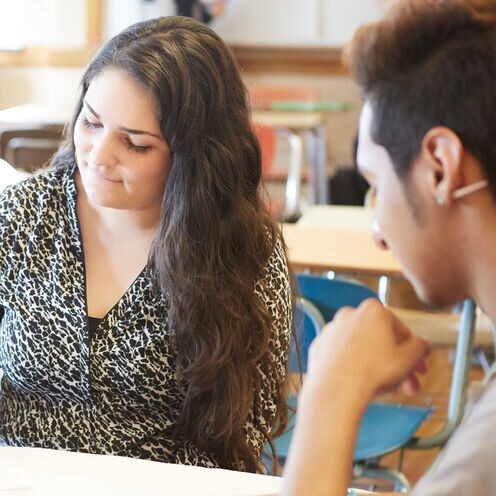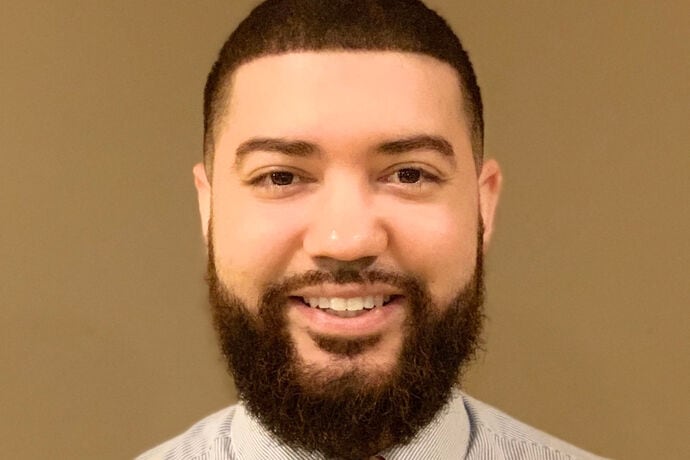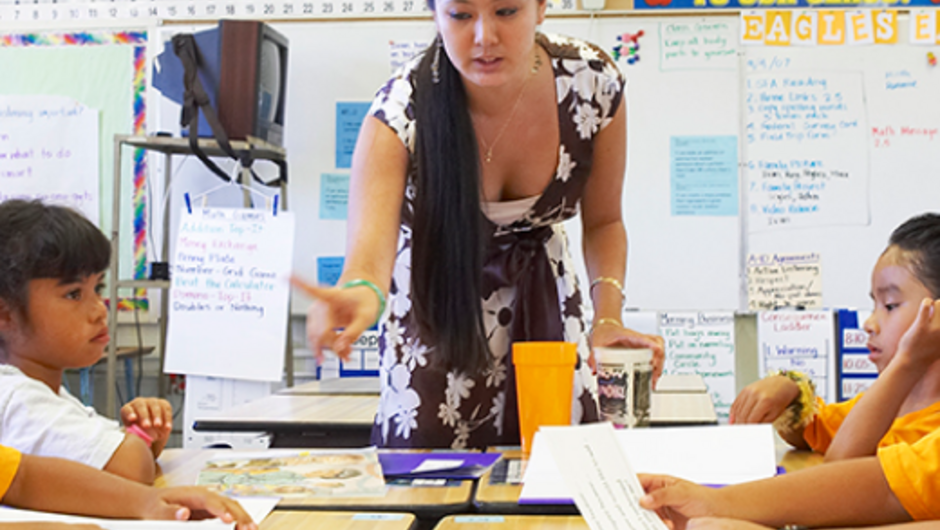
We Must Transform Our School Discipline Policies
Restorative justice practices offer a more equitable and effective way to address conflict, whether school is remote or in person.
Even in the era of remote learning, schools continue to be perpetrators of trauma through disciplinary actions.
Students have been suspended for removing their masks, and in some extreme cases, students who purposely cough on someone can face assault charges. In Colorado Springs, law enforcement was called on a middle school student who displayed a toy Nerf gun during virtual class. In Texas, a student was reportedly arrested for wearing a mask inappropriately.
Students are being excluded from online classes when struggling with remote learning norms, and to make matters worse, child services have been called on families whose youths are absent from digital classes.
Black children account for 15.5 percent of students enrolled in K-12 education, but they represent 39 percent of overall suspensions. This criminalization of Black and brown students starts as early as 3 to 4 years old, neglecting their social-emotional needs for development. Schools adhering to disciplinary systems like “zero-tolerance” are knowingly and willingly perpetuating a racist culture that creates systematic inequality. Racial bias, along with the denial of intergenerational traumas of racism and social-economic inequities, continues to be an open door for the school-to-prison pipeline. This school-to-prison pipeline is a blatant war on poverty and economic resources that disproportionately impacts students of color.
The path of restorative justice offers a different perspective in the way we think about healing harms, consequences, or accountability. It presents educators an opportunity to teach our students the true meaning of justice and harmony. At some point in our history, we misconstrued the idea of justice in regard to discipline as needing to be harsh or violent. Restorative justice values should allow our students to center themselves around examining righteousness in their thoughts and actions, and empower them to develop a process of self-reflection to comprehend their relationship with others. The focus should be on providing opportunities for personal growth in which they can understand wrongs and acknowledge the hurt of others while building a sense of compassion and empathy.
Building community is an actionable step we can take to implement restorative justice. Students should feel a connection to their school in which they are seen and heard. It is important to foster this sense of belonging through various activities, whether in-person or remote.
Educational philosopher Paulo Freire emphasized that students need to feel they are the subject of their school experience, not the object. Place them in positions to be active citizens who play a role in their schools. This can be done by providing various spaces for common interests, such as race-based affinity groups, clubs, elective courses, and sports teams. Even if we are remote, providing a digital space for students to socially engage promotes an aspect of building communal bonds.
This proactive approach focuses on the social-emotional learning component of exploring identity in relation to their contributions at school. Students should be celebrated for their identities in ways that elevate their voices and self-expression. When conflict occurs or harms are committed, students can take into consideration their roles and their responsibilities in repairing their mistakes. We need students to show accountability in acknowledging the impact of their actions in relation to others, working to restore dignity, and healing harm.
The value of restorative justice comes in the form of storytelling in which we can be vulnerable. Storytelling promotes learning through compassion and helps us cope with our struggles by acknowledging our experiences. Our ancestors taught around campfires, telling stories of values where lessons were passed down to future generations. Restorative Justice practices encompass these ideas and create a space for deep conversations.
These places of dialogue emphasize social-emotional learning while developing crucial interpersonal communication skills. In a remote world, we can still create a space for our students to receive support for traumas with restorative coordinators, counselors, and social workers.
The process is demanding. We must encourage our students to explore their relationship with humanity and partake in an inquisition around morality. Let’s remember we are cultivating the young minds of human beings who should be striving to be the best version of themselves, whether in school or online.
However, we know there is no such thing as a perfect world and there will always be conflicts. Some students will demand more support than others. The traumas they've experienced should only motivate us to provide the emotional support they need. These are the students I invite to hold equitable dialogues and assist them in their reflective growth practices. Schools or remote schools should be utilized to learn the skills students will need to deal with real-world situations.
As an educator, I’ve introduced workaround reflection and meditation for students to center themselves when dealing with difficult situations. We discuss their struggles and celebrate their growth. When conflicts occur, we find ways to teach students how to make things right. If a student is having difficulties, bring in peers who can support them in their journey to restoring balance. Have them make commitments by designing actionable steps they can take to progress. We are educators who should no longer be policing our students, especially in their own homes.
In my restorative justice journey this remote year, students have been invited to meet in digital circle conversations when conflicts occur or support is needed. Students should see these spaces as a place they can express their concerns, address any harms, and make requests to prevent further struggles. A strong community and a strong sense of relationship allow the groundwork for creating harmony. This process prevents many disruptions or behaviors that are occurring in the classroom, especially remotely, which is causing further distress to our students.
As educators, our conversations with students and our being attentive to their traumas will begin to heal the hurt inflicted by our educational systems. We must commit to the work, especially in dealing with a racist culture that places blame on Black and brown students but excuses the mistakes of white students with compassion. We are all human, we all have traumas that require healing; it is our natural impulse to yearn for discourse when we hurt. Let’s begin that restoring process for all our children so they can become agents of change who continue to heal the world. We have a chance to use this moment of remote learning to dismantle and rebuild an alternative system that benefits all students.

Jorge Santos is a restorative justice coordinator, a special education teacher, and grade team leader at MS 839 in Brooklyn, N.Y. He is part of the school’s Instructional Leadership Team as well as the Culture & Equity Team, which focuses on creating an anti-racist and equitable learning environment. Jorge is a restorative justice advocate who focuses on building community and empowering student voices. He holds master's degrees in criminology and in special education from St. John’s University which influences his work around understanding social and economic inequities.
We want to hear your opinions! To submit an idea for an Opinion piece or offer feedback on this story, visit our Suggestion Box.
The opinions expressed in this piece, and all others in our Opinion section, represent those of the authors and do not necessarily reflect the views and opinions of the Teach For America organization. Teach For America is a 501(c)(3) nonpartisan, nonprofit organization and does not endorse any campaigns or candidates for public office. Recipients of AmeriCorps funding, including most TFA corps members, are prohibited from engaging in political, voter registration, and census activities while charging time to their AmeriCorps grant.
Sign up to receive articles like this in your inbox!
Thanks for signing up!
Content is loading...





